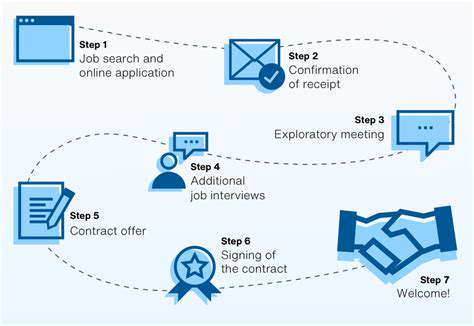How to Start a Pet Sitting Side Hustle

Crafting a Compelling Pet Sitting Business Plan
Market Analysis and Target Audience
A crucial component of any successful business plan is a thorough understanding of your target market. Identifying your ideal pet-sitting clients, including their specific needs and preferences, is essential for tailoring your services and marketing efforts. This involves research into the demographics of your area, such as the prevalence of pet ownership, the types of pets most commonly owned, and the typical lifestyles of pet owners. Understanding the competition, both direct and indirect, is also vital. Are there other pet sitters in the area? What are their strengths and weaknesses? How can you differentiate your services to attract clients who might otherwise choose a competitor? This analysis should inform your pricing strategy and marketing approach.
Defining your target audience will allow you to focus your marketing efforts and tailor your services to meet their unique needs. For example, if you identify a strong demand for overnight pet sitting, you can emphasize these services in your marketing materials. Understanding the specific needs of various pet types, like senior dogs or cats with special dietary requirements, will also be beneficial. By clearly defining your target market, you'll be better positioned to attract and retain clients, leading to a more sustainable and profitable pet-sitting business.
Financial Projections and Operational Plan
A robust financial plan is critical for securing funding, attracting investors, and ensuring the long-term viability of your pet-sitting business. This should include projected revenue and expenses, considering factors like the cost of supplies, insurance, marketing, and potential taxes. Detailed cost breakdowns for different services, such as dog walking, overnight stays, or pet transportation, are essential. Anticipating potential fluctuations in demand, such as seasonal variations in pet-sitting requests, is also important for maintaining a stable financial outlook. Thorough research into comparable businesses and their pricing models will help you establish a realistic and competitive pricing structure for your services.
Your operational plan should outline the specific procedures and processes involved in running your pet-sitting business. This includes details like scheduling systems, client communication protocols, pet care procedures, emergency contact procedures, and insurance coverage. Having a clear and concise operational plan will ensure smooth daily operations, maintain client trust, and minimize potential risks. It should also address the necessary legal and regulatory requirements for pet sitters in your area, such as licensing and insurance. Consider how you'll handle situations like vet visits, medication administration, or emergency situations.
Marketing Your Pet Sitting Services
Understanding Your Target Audience
Identifying your ideal pet owner is crucial for effective marketing. Consider factors like location (e.g., neighborhoods with high pet ownership rates), pet types (e.g., dogs, cats, birds), and pet owner demographics (e.g., age, lifestyle, income). Understanding their needs and pain points (e.g., difficulty finding reliable sitters, concerns about pet well-being) will help you tailor your marketing messages and services to resonate with them. This detailed understanding will allow you to pinpoint the most effective channels to reach the right pet owners.
Researching your local competition is also key. Analyze their services, pricing, and marketing strategies. What are their strengths and weaknesses? This competitive analysis will enable you to position your services effectively and differentiate yourself from the crowd.
Crafting a Compelling Service Description
Clearly outline the services you offer, such as overnight stays, daily walks, grooming appointments, and emergency care. Highlight your experience, qualifications, and any unique selling propositions (USPs) that make you stand out. For example, are you a certified pet first-aider, or do you specialize in exotic pet care?
Use clear and concise language, avoiding jargon. Emphasize the benefits of your services, like peace of mind for pet owners and the safety and well-being of their beloved companions.
Leveraging Online Platforms
Utilize online platforms like social media (Facebook, Instagram, TikTok) to showcase your services and build a brand. Create engaging content featuring adorable pet photos, videos of happy pets in your care, and testimonials from satisfied clients. Use relevant hashtags to increase visibility and reach a wider audience.
Consider creating a professional website or using online booking platforms. This will provide a central hub for clients to learn more about you, book services, and leave reviews.
Utilizing Local Networking Opportunities
Attend pet-related events, such as dog parks, adoption days, and pet expos. Networking with pet owners and local businesses can lead to valuable referrals and partnerships. Offer discounts or free consultations to entice potential clients.
Partner with local vets, groomers, or pet stores to expand your reach. Joint promotions can expose your services to a wider customer base and build trust within the community.
Building a Strong Online Presence
A professional online presence is crucial for credibility and attracting clients. This includes a well-designed website that displays your services, pricing, and contact information. Ensure your website is mobile-friendly for easy access on various devices.
Maintain an active social media presence to showcase your services and build a community. Share engaging content, run contests, and respond promptly to inquiries.
Developing a Marketing Budget
Allocate a portion of your income to marketing your pet sitting services. This budget can cover advertising expenses, website maintenance, social media management, and any other marketing activities.
Consider various marketing strategies such as paid advertising, content creation, and community engagement. Track your marketing efforts to determine their effectiveness and adjust your approach accordingly.
Providing Excellent Customer Service
Positive customer experiences are paramount for building a successful pet sitting business. Ensure you provide exceptional care and communication to all your clients. Respond promptly to inquiries, follow up after each visit, and address any concerns or issues effectively.
Collecting and responding to reviews and testimonials is also crucial. Positive reviews demonstrate your commitment to quality care and attract new clients. Address any negative feedback constructively to improve your services.
Read more about How to Start a Pet Sitting Side Hustle
Hot Recommendations
- How to Stay Productive While Working Remotely
- Tips for Managing Conflict with Coworkers
- Entrance & Certification Exams (升学考试)
- How to Improve Your Storytelling Skills (Speaking)
- How to Find Profitable Side Hustles
- Tips for Preparing for the TOEFL iBT Home Edition
- Guide to Switching Careers from [Industry A] to [Industry B]
- How to Run an Effective Hybrid Meeting
- Tips for Marketing Your Side Hustle on Instagram











